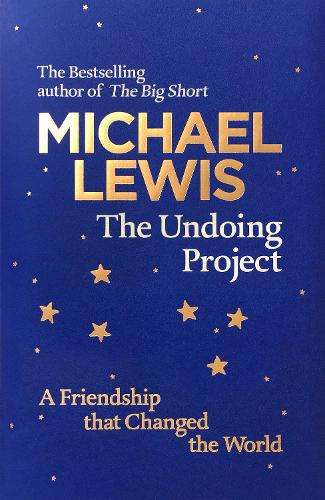
The Undoing Project - A Friendship That Changed the World (Michael Lewis)
Check my rate
| Main centres: | 1-3 business days |
| Regional areas: | 3-4 business days |
| Remote areas: | 3-5 business days |

| Main centres: | 1-3 business days |
| Regional areas: | 3-4 business days |
| Remote areas: | 3-5 business days |
Bestselling author Michael Lewis examines how a Nobel Prizewinning theory of the mind altered our perception of reality.
Forty years ago, Israeli psychologists Daniel Kahneman and Amos Tversky wrote a series of breathtakingly original studies undoing our assumptions about the decision-making process. Their papers showed the ways in which the human mind erred, systematically, when forced to make judgments about uncertain situations. Their work created the field of behavioral economics, revolutionized Big Data studies, advanced evidence-based medicine, led to a new approach to government regulation, and made much of Michael Lewiss own work possible. Kahneman and Tversky are more responsible than anybody for the powerful trend to mistrust human intuition and defer to algorithms.
The Undoing Project is about the fascinating collaboration between two men who have the dimensions of great literary figures. They became heroes in the university and on the battlefieldboth had important careers in the Israeli militaryand their research was deeply linked to their extraordinary life experiences. In the process they may well have changed, for good, mankinds view of its own mind.
Rather than jumping straight into theories on economics or psychology, Lewis chooses to open The Undoing Project with a reference to Moneyball, followed up with a chapter on how a psychologist with no sports background became an NBA general manager in charge of selecting potential players in the draft. Sports is not the first thing the average person evokes when discussing economics, yet, opening with a discourse on basketball immediately makes a difficult subject accessible to the average person. Yet, Lewis is not just discussing basketball. He offers psychological scenarios as to what people think of when they think of an NBA player. Usually that person is over six feet tall and athletic. Yet, in this situation, the general manager was also searching for players with good character and who respond favorably to a battery of questions. Lewis with this chapter put me in a positive mind frame to read about an otherwise tedious subject matter.
Amos Tversky and Daniel Kahneman were the least likely of friends. Both were among the pioneers of the new nation of Israel, Kahneman surviving the atrocities in Europe and Tversky born a sabra (native Israeli). Tversky was always the most popular and the life of a party whereas Kahneman was a natural introvert who barely felt comfortable in their own skin. After participating in wars at the formation of the Israeli state, both their paths eventually lead them to the psychology department at the brand new Hebrew University of Jerusalem. Kahneman leaned toward behavioral psychology whereas Tversky favored the mathematical aspect of the science. Despite being polar opposites in personality, their brilliant minds lead them to each other, and by the 1960s they began to collaborate on a series of game changing papers. The duo began to think as one mind and often could not remember who came up with each idea. The partnership was a match made in heaven, and for Kahneman, Tversky, and the science behind psychology, four decades of Undoing Freudian psychological theories would ensue.
Lewis alternates biographies of Kahneman and Tversky with the scientific data of their findings that eventually lead Kahneman to win the Nobel Prize in Economics. The majority of economists, according to Lewis, look down upon psychologists as inferior to them; however, Kahneman and Tversky over the course of their joint careers published findings that could not be ignored by either field. Listing four heuristics, the psychologist team set out to change the way people think about a series of outcomes. Lewis cites various positive and negative gambling scenarios and writes in a way that even those not versed in economics can understand his writing. The psychologists may have posed their original questions to graduate students and doctors, but in this book, these questions became accessible to the average reader. I was especially interested in knowing that these findings benefitted medical doctors, NBA general managers, the US free lunch program, as well as the Israeli Air Force training program. The most commonly cited finding in a variety of forms was A over B, C over A, then why in the end do people select B over C or A. These behavioral findings that were revolutionary in the 1970s are now the basis of a widely studied field called behavioral economics, which was the result of this unique partnership.